The top-secret X-37B space plane will perform a ‘never-before-seen maneuver’ – in a new exercise that could allow it to escape detection by hostile countries
The Pentagon generally provides few details about the X-37B, the top-secret space plane that flies up to 500 miles above Earth.
But the Ministry of Defense has now revealed that the unmanned spacecraft is about to perform a ‘first of its kind’ maneuver to change its orbit.
It is thought that this new exercise will be able to evade detection by enemy countries and carry out secret ‘low-passes’ over Earth.
The Boeing-built vehicle, which is about the size of a small bus and resembles a miniature space shuttle, has been launched seven times since 2010.
Although the ship’s exact purpose is a guarded secret by the US Space Force, it is believed to be carrying spy equipment, satellites or even weapons.
X-37 is a reusable robotic spacecraft manufactured by Boeing for the United States government. Boeing says it is designed to operate in low Earth orbit, 150 to 500 miles above Earth
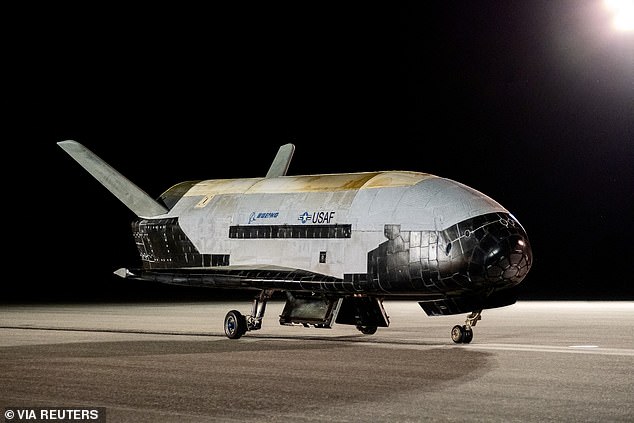
The Pentagon has released details of the X-37B mission (pictured), conducted by the US Space Force under the military’s National Security Space Launch program.
The Boeing
The US Space Force has confirmed that it has conducted “radiation effect experiments” and tested “consciousness technologies” in a “highly elliptical” orbit – one that is not perfectly circular.
Now, in a rare form updateFrank Kendall, Secretary of the Air Force, has intriguingly confirmed that she is conducting “national security missions in space.”
The online update also revealed that this ‘new space maneuver’ – called aerobraking – is being attempted for the first time.
Aerobraking is a method of slowing a spacecraft by using a planet’s atmosphere, or outer layers of gas.
The spaceplane “dives” into the atmosphere, and as it does so, the gas molecules in the atmosphere rub against the ship.
This acts as drag and slows the ship down.
Often a ship will use aerobraking to change an orbit or slow a ship enough that gravity will pull it toward a planet.
“This unique maneuver by the X-37B is an incredibly important milestone for the United States Space Force,” said Space Force General Chance Saltzman.
“We are seeking to expand our capability and ability to perform in this challenging domain.”
During aerobraking, the X-37 will also “safely dispose of its service module components in accordance with space debris standards,” the US Space Force added.
It said in its statement: ‘The use of the aerobraking maneuver, a series of passes using the resistance of the Earth’s atmosphere, allows the spacecraft to change orbit while consuming minimal fuel.
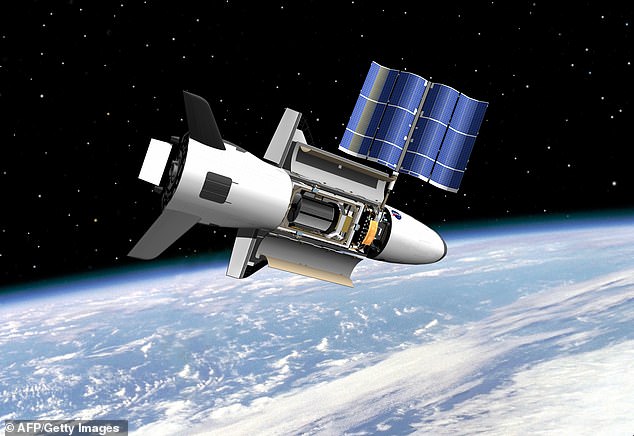
The artist’s rendering above shows what the spaceplane – which uses an onboard propulsion system – might look like as it orbits Earth
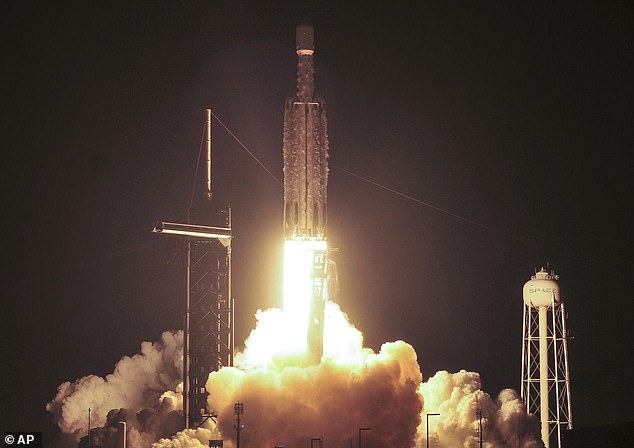
A SpaceX Falcon Heavy rocket carrying the spaceplane lifts off from the Kennedy Space Center in Cape Canaveral, Florida, December 28, 2023
“Once the aerobrake maneuver is complete, the
The U.S. Space Force falls under the Department of Defense, also known as the Pentagon.
Overall, the Pentagon is releasing few details about the X-37B, which is being fielded by the U.S. Space Force under the military’s National Security Space Launch program.
First launched in 2010, the .
It is currently on its seventh mission, dubbed ‘OTV-7’, which launched on December 28 from the Kennedy Space Center in Florida aboard a SpaceX rocket.
The unmanned space plane is thought to have carried a mysterious payload during long-duration flights into orbit for each mission.
During its fifth mission, OTV-5, in 2017, the payload on board was found to be an “embedded thermal spreader” – equipment that tests the longevity of electronics and heat pipes in the space environment.
During this mission in June 2019, Dutch astronomer Ralf Vandebergh took rare photos of the X-37B in orbit around the Earth – at an altitude of about 340 kilometers.
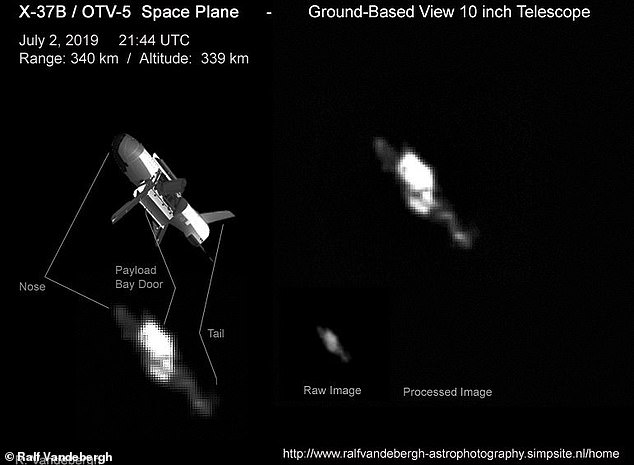
Dutch astronomer Ralf Vandebergh took rare photos of the X-37B in orbit – at an altitude of about 330 kilometers – in June 2019
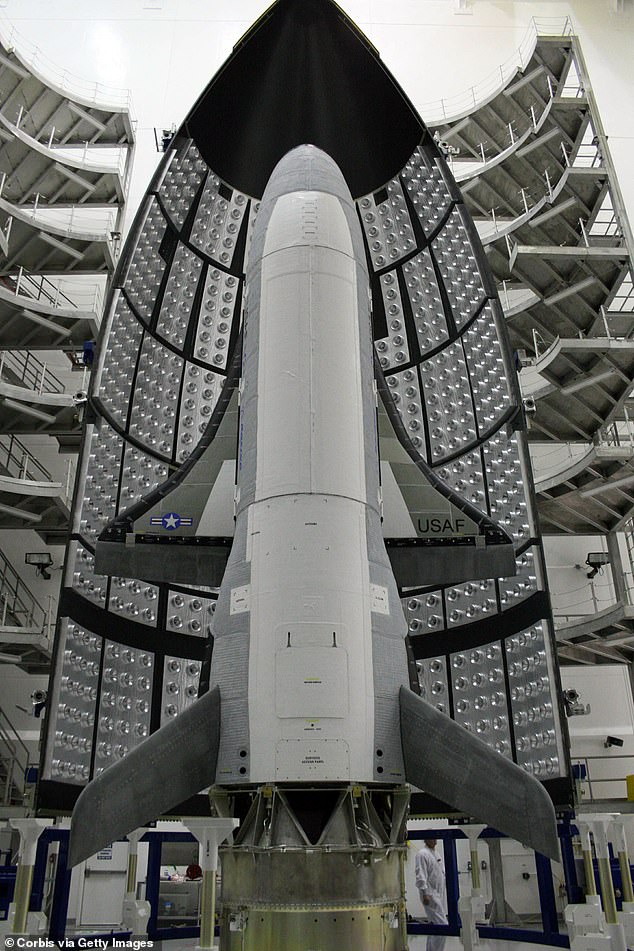
The aircraft’s final journey, dubbed the Orbital Test Vehicle-5 (OTV-5), began on September 7, 2017. It was launched atop a SpaceX Falcon 9 rocket from NASA’s Kennedy Space Center.
According to reports, X-37B also conducted a NASA experiment to study how plant seeds are affected by long-term exposure to the harsh environment of space radiation.
The ability to grow crops in space has major implications for feeding astronauts on future long-term missions to the moon and Mars.
However, as with previous missions, OTV-7 is considered classified by the US Space Force and therefore the exact mission objectives have not been revealed.
The planned duration of the final seventh mission was not made public, but could last until June 2026 or later, given the prevailing pattern of increasingly longer flights.
The last mission remained in orbit for more than two years before landing in November 2022.

